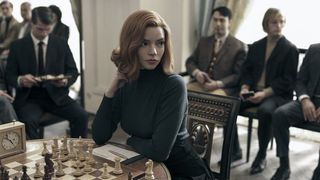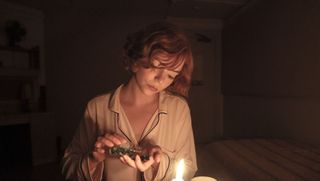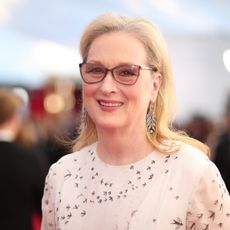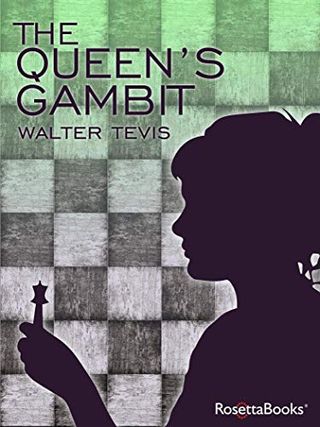
Is Beth Harmon from The Queen's Gambit a real person?
In the ever-expanding streaming universe, there are TV shows that make you laugh, those that scare you half to death, and those that inspire you with the protagonist's incredible achievements and make you grateful for the relative stability of your life. The latest entry in that last genre is The Queen's Gambit, which dropped on Netflix in October and stars Anya Taylor-Joy as an orphaned chess prodigy struggling with drug addiction. The miniseries' seven episodes follow nearly a decade and a half of the life of Taylor-Joy's Beth Harmon.
Her story starts at an orphanage, where she is fed tranquilizers and soon builds an addiction to the drugs, but also unlocks a hidden talent while learning to play chess from the facility's custodian. Over time, she must deal with her addiction while pursuing her dream of becoming a chess grandmaster. With this particular brand of gritty triumph against all odds at the core of much of the "based on a true story" canon of film and TV, it's practically impossible not to wonder whether The Queen's Gambit is, indeed, based on a true story.
Here's what you need to know about the series' source material, and what it means for the future of the show.
Unfortunately for those hoping to fall down a Wikipedia research hole about the real-life Beth Harmon, her story is completely fictional. On the plus side, the Netflix series takes its name and story from a 1983 novel by Walter Tevis, so there's still a way to continue getting your Queen's Gambit fix after you've finished binging the show.
It seems incomprehensible that it took nearly 40 years to bring such an amazing story to life onscreen, and in fact, there have been several attempts to do so over the years: first, with a script by author, journalist, and screenwriter Jesse Kornbluth, and later, with Heath Ledger (who was battling addiction and was a chess whiz himself) preparing to begin production as director and star right before his untimely death in 2008.
It wasn't until 2019, more than three decades after the novel was published, that Netflix finally saved the adaptation from development hell, with Scott Frank writing, directing, and executive producing. Allan Scott, who has owned the film rights to The Queen's Gambit since 1992 and was working with Ledger on the latter version's screenplay (which would've starred Elliot Page in the lead role), finally achieved his goal of adapting the novel as co-creator and executive producer of the 2020 series.
Even though Beth Harmon is technically a fictional character, chess expert Dylan Loeb McClain pointed out in The New York Times that she bears many striking similarities to another well-known chess prodigy, Bobby Fischer. To name a few: They both won the U.S. championship title in 1967, began supporting themselves in their late teens, learned Russian to keep up with their Soviet competitors, spent beyond their means on fancy clothes, and stood out from their fellow chess pros by being able to make a living playing chess. What's more, the book that Beth's mentor Mr. Shaibel gives her when she begins playing chess, Modern Chess Openings, was actually co-authored by Fischer's own early mentor, Jack Collins. Finally, and most importantly, according to McClain, "Beth and Fischer have similar, aggressive playing styles. And when playing white and facing the Sicilian Defense, they both play the same system: the Fischer-Sozin Attack."
Stay In The Know
Marie Claire email subscribers get intel on fashion and beauty trends, hot-off-the-press celebrity news, and more. Sign up here.
In a fun twist, as McClain noted, since Fischer was known to be dismissive of female chess players and once claimed they were less intelligent than men, "Making Beth recall a female Fischer may have been a sneaky, and wonderful, way to send up that assessment."
Where did the story of The Queen's Gambit come from?
According to a 1983 interview with The New York Times, Tevis, who died a year after publishing the novel, drew much of his inspiration for Beth's story from his own experiences.
The chess scenes, for example, came from his time as a Class C competitor. "I first began to play chess with my sister and the kids on my block," Tevis said. "I once won a prize of $250 and became a Class C player. I now play against a computer so I don't have to face a real-life opponent sneering at me—I can always pull out the plug. I've played well enough to know what a good game is. I can beat the average person, but I'm afraid to play those guys who set up boards in the street on Broadway."
Beth's drug addiction, too, came from real-life experience. "When I was young, I was diagnosed as having a rheumatic heart and given heavy drug doses in a hospital. That's where Beth's drug dependency comes from in the novel," Tevis told the Times. He continued, "Writing about her was purgative. There was some pain—I did a lot of dreaming while writing that part of the story. But artistically, I didn't allow myself to be self-indulgent."
He further expanded on his struggles with addiction in a 1981 interview with the San Francisco Examiner, saying that he was given phenobarbital three times a day while recovering from his heart condition in a convalescent home. "I loved it. ... That may be one reason I became a drunk," Tevis said, per The Ringer. Years later, he turned to chess as a distraction while recovering from his alcoholism: "I think that most people take up the game of chess in a very serious way if they have personality problems. When they're trying to stay away from something else in life," he reportedly told Book Beat around the time that The Queen's Gambit was published. "Y'know, getting rid of some of that anxiety by displacing it in something that was relatively safe."

Overall, Tevis considered The Queen's Gambit to be "a tribute to brainy women," he told the Times. "I like Beth for her bravery and intelligence. In the past, many women have had to hide their brains, but not today," he explained.
Will there be a second season of The Queen's Gambit?
Probably not. For one thing, there is only one book, all of which was included in the series' seven episodes. For another, the show itself is billed as a limited series, implying that the single season is meant to stand alone. And finally, showrunner Scott Frank's last Netflix project, 2017's Godless, was also a standalone miniseries of seven episodes—meaning he has experience telling exactly the story he wants to in exactly one season, rather than dragging things out forever.
If you're still not convinced, executive producer William Horberg basically confirmed to Town & Country that the final episode of the series will truly be the end of The Queen's Gambit, despite how intriguing it is to wonder about what's next for Beth. "The last scene feels like a beautiful note to end the show on, so I'm not sure if we want to go on and answer that question. Maybe we can just let the audience imagine what comes next," he said.
That said, Taylor-Joy recently let slip that she wouldn't be opposed to reprising her role as Beth Harmon, even though she fully approves of how her story ended at the end of the first season. "I adore the character, and I would certainly come back if I was asked to, but I do think we leave Beth in a good place," she told T&C in October. "I think the rest of her life will surely be an adventure as well, but in the quest that she goes on in this to find some form of peace, just some form of being able to be happy with who she is. I think it ends in a nice place."
RELATED STORY

Andrea Park is a Chicago-based writer and reporter with a near-encyclopedic knowledge of the extended Kardashian-Jenner kingdom, early 2000s rom-coms and celebrity book club selections. She graduated from the Columbia School of Journalism in 2017 and has also written for W, Brides, Glamour, Women's Health, People and more.
-
 Olivia Rodrigo Is Bringing Visible Bra Straps Back
Olivia Rodrigo Is Bringing Visible Bra Straps BackThe pop-punk princess wore custom Victoria's Secret at Coachella.
By Julia Gray Published
-
 Meghan Markle’s New Netflix Cookery Show Begins Filming Today—But Not Where You’d Expect It to Be Shot
Meghan Markle’s New Netflix Cookery Show Begins Filming Today—But Not Where You’d Expect It to Be ShotThe Sussexes are having a busy week this week, shooting both of their his-and-her Netflix shows and rolling out the first product offering for Meghan’s new lifestyle brand American Riviera Orchard.
By Rachel Burchfield Published
-
 How I'm Redefining My Wellness Journey in 2024
How I'm Redefining My Wellness Journey in 2024Sponsor Content Created With The Honey Pot
By Aniyah Morinia Published
-
 The Best Bollywood Movies of 2023 (So Far)
The Best Bollywood Movies of 2023 (So Far)Including one that just might fill the Riverdale-shaped hole in your heart.
By Andrea Park Published
-
 ‘Bachelor in Paradise’ 2023: Everything We Know
‘Bachelor in Paradise’ 2023: Everything We KnowCue up Mike Reno and Ann Wilson’s “Almost Paradise."
By Andrea Park Last updated
-
 Who Is Gerry Turner, the ‘Golden Bachelor’?
Who Is Gerry Turner, the ‘Golden Bachelor’?The Indiana native is the first senior citizen to join Bachelor Nation.
By Andrea Park Last updated
-
 ‘Virgin River’ Season 6: Everything We Know
‘Virgin River’ Season 6: Everything We KnowHere's everything we know on the upcoming episodes.
By Andrea Park Last updated
-
 Kim Cattrall Didn't See or Speak to Her Costars When Filming 'And Just Like That' Cameo
Kim Cattrall Didn't See or Speak to Her Costars When Filming 'And Just Like That' CameoThat's some type of commitment.
By Iris Goldsztajn Published
-
 The 60 Best K-Dramas You'll Be Completely Hooked On
The 60 Best K-Dramas You'll Be Completely Hooked OnWait, how is it already 2 a.m.?
By Quinci LeGardye Last updated
-
 Selena Gomez Revealed Meryl Streep Is Joining 'Only Murders in the Building' Season 3
Selena Gomez Revealed Meryl Streep Is Joining 'Only Murders in the Building' Season 3Fans are losing it.
By Iris Goldsztajn Published
-
 The 60 Best Musical Movies of All Time
The 60 Best Musical Movies of All TimeAll the dance numbers! All the show tunes!
By Amanda Mitchell Last updated
